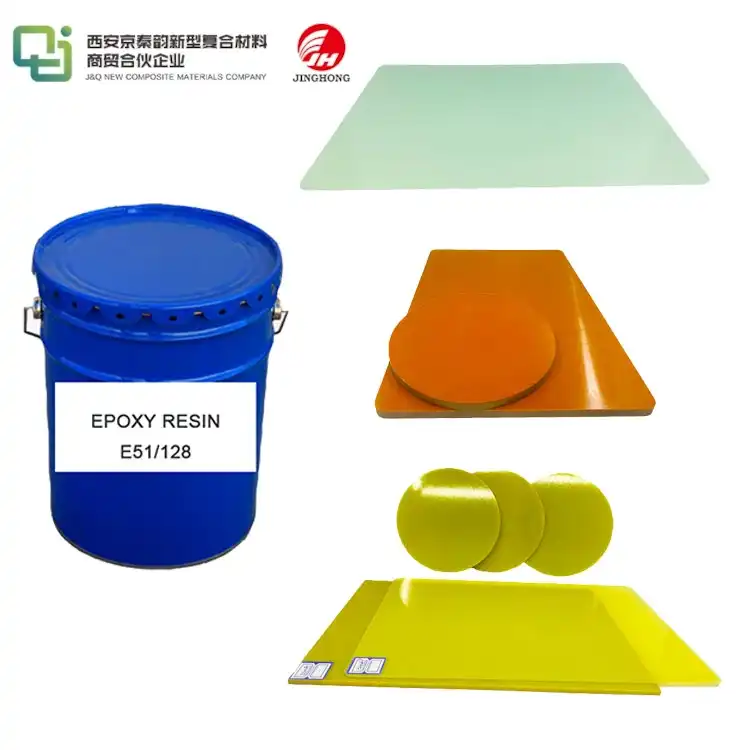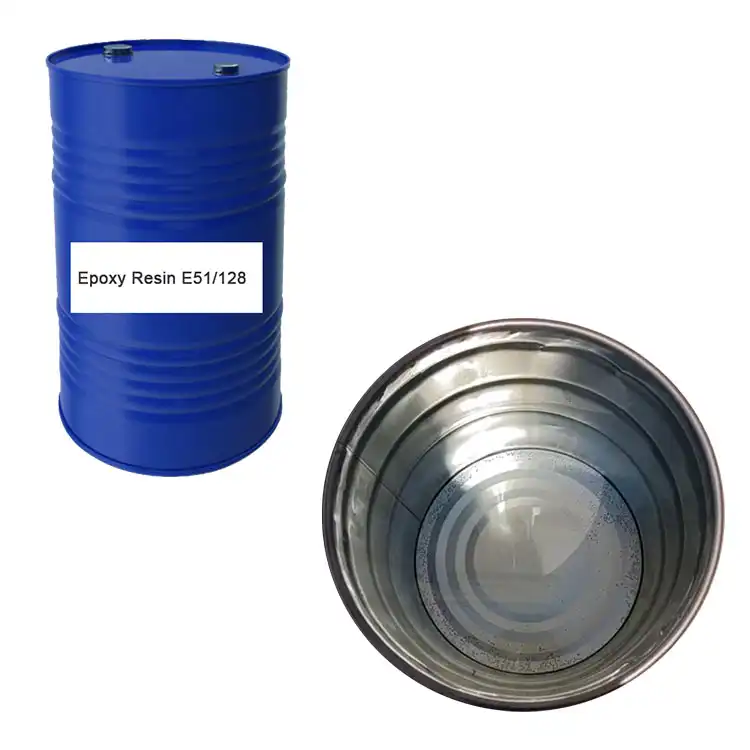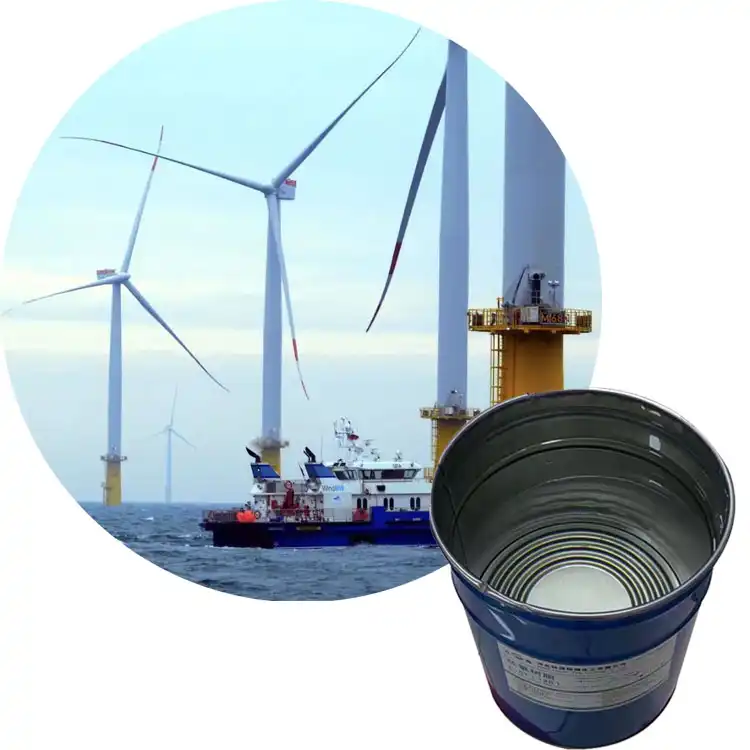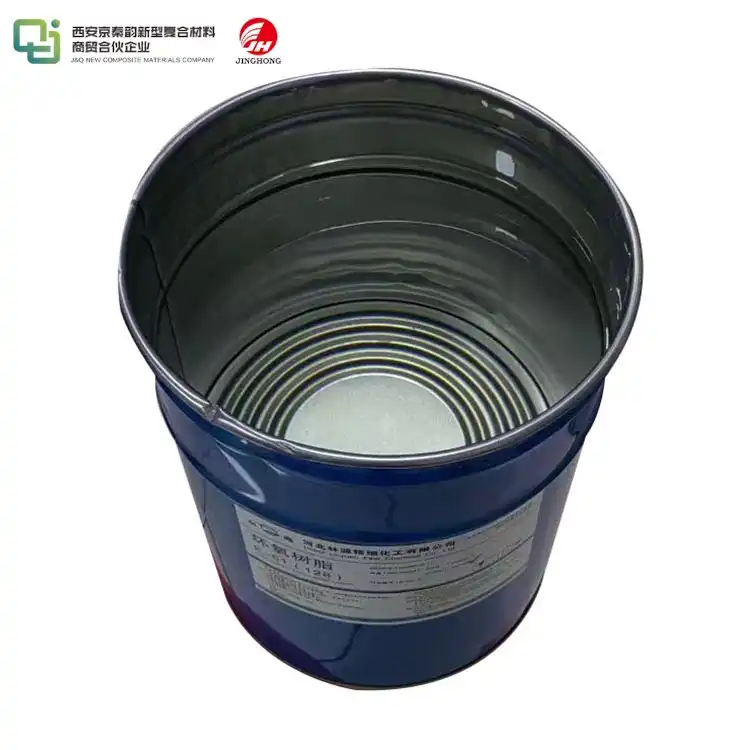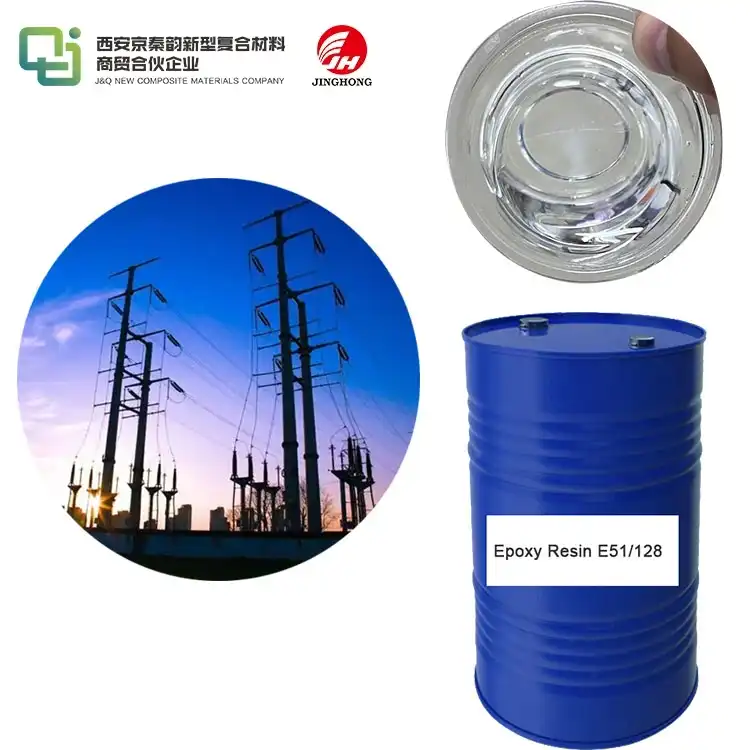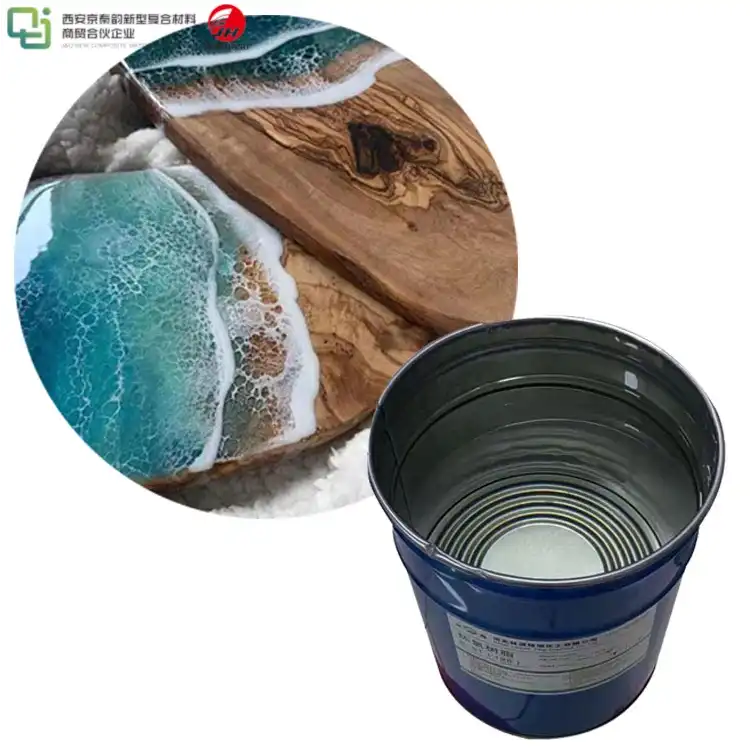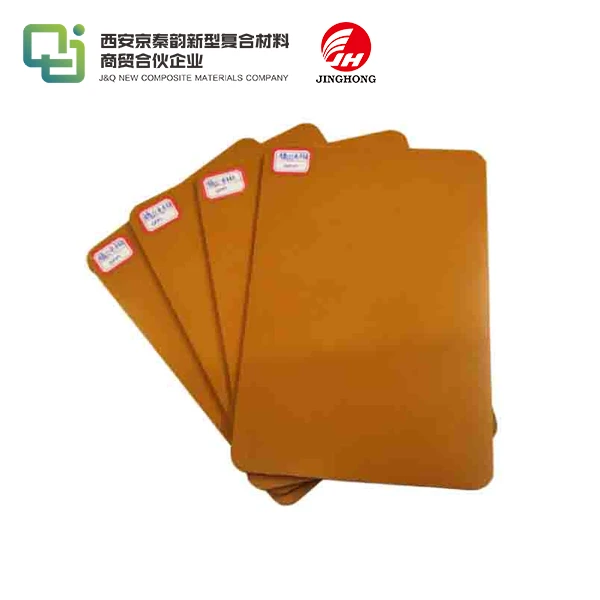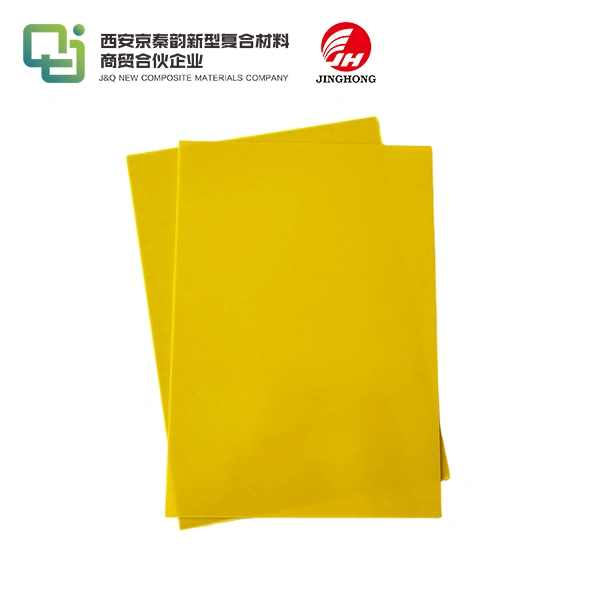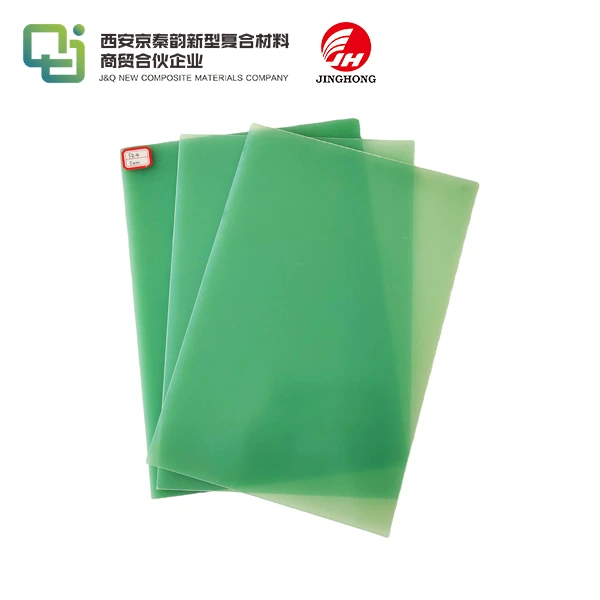Liquid Epoxy Resin
Basic Information:
Brand:Jinghong
Material:Epoxy Resin
Color: Transparent
Shelf Life: 12 Months
Model Number:E51
MOQ:20kgs
Payment Terms: L/C T/T Credit Card
- Fast Delievery
- Quality Assurance
- 24/7 Customer Service
Product Introduction
Production Description
Liquid Epoxy Resin is soluble in benzene, toluene, xylene, acetone and other organic solvents. Good fluidity, easy to mix with auxiliary materials, convenient molding and processing, good dimensional stability after curing, shrinkage less than 2%, it is the resin with the smallest shrinkage rate of thermosetting resin, thermal expansion coefficient 6-10.5% - excellent bonding performance, good electrical insulation performance, mechanical performance and chemical stability.
Application
1. Pouring of insulation packages for electrical appliances and motors: manufacturing of overall fully sealed insulation packages for high and low voltage electrical appliances such as electromagnets, contactor coils, transformers, dry-type transformers, etc. It has developed rapidly in the electrical industry. It has developed from normal pressure pouring and vacuum pouring to automatic pressure gel forming.
2. Liquid Epoxy Resin is widely used for encapsulation and insulation of devices with electronic components and circuits. It has become an indispensable and important insulating material in the electronic industry.
3. Electronic grade epoxy molding compound is used for plastic packaging of semiconductor components. It has developed very fast in recent years. Because of its superior performance, it has a great tendency to replace the traditional metal, ceramic and glass packaging.
4. Epoxy laminated plastic is widely used in electronic and electrical fields. The development of epoxy copper clad laminate is particularly rapid, and it has become one of the basic materials in the electronic industry. In addition, epoxy insulating coatings, insulating adhesives and electrical adhesives are also widely used.
5. Engineering plastics and composite materials: epoxy engineering plastics mainly include epoxy molding materials, epoxy laminated plastics and epoxy foam plastics used for high-pressure molding. Epoxy engineering plastics can also be regarded as a kind of generalized epoxy composite materials. Epoxy composites mainly include epoxy glass fiber reinforced plastics (general composite) and epoxy structural composites, such as pultruded epoxy profiles, wound hollow rotary products and high-performance composites. Epoxy composite is an important structural and functional material in chemical industry, aviation, aerospace, military and other high-tech fields.
6. Civil materials are mainly used as anti-corrosion floor, epoxy mortar and concrete products, high-grade pavement and airport runway, quick repair materials, grouting materials for strengthening foundation, building adhesives and coatings, etc
1. Ornament Splice 2. Floor Coating 3. Insulation Material
4. Wind Power Blade Plate 5. A B Glue 6. Electrical Industry
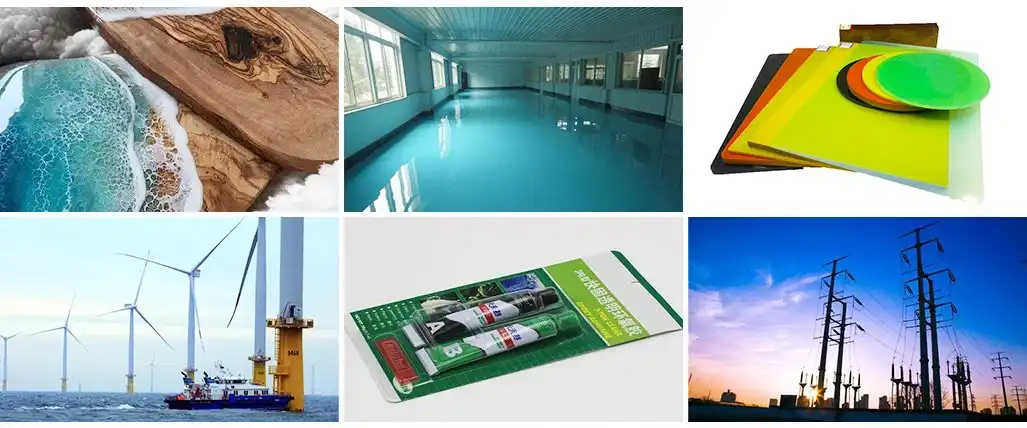
Technical Data for E51
Production | Epoxy Resin | Standards |
Product Model | E-51 | |
Test Item | Technical Indicators | Test Result |
Appearance | Colorless Transparent Liquid | Standard |
Epoxy Equivalent g / Eq | 184 ~ 194 | 189 |
Hydrolyzed Chlorine PPm | ≤1000 | 179 |
Inorganic Chlorine PPm | ≤10 | 3 |
Volatile Matter % | ≤1 | 0.078 |
Viscosity 25℃ (mpa. S) | 12000 ~ 14000 | 12200 |
Chroma pt-co | ≤60 | 15 |
Minimum Molecular Weight (N=0) | 78.0 ~ 86.0 | 81.2 |
Property and Characteristic
High mechanical properties. Liquid Epoxy Resin has strong cohesion and dense molecular structure, so its mechanical properties are higher than those of general thermosetting resins such as phenolic resin and unsaturated polyester.
Strong adhesion. The curing system of epoxy resin contains epoxy group, hydroxyl group, ether bond, amine bond, ester bond and other polar groups with great activity, which endows the epoxy cured material with excellent adhesion to polar substrates such as metal, ceramics, glass, concrete and wood.
Good processability: epoxy resin basically does not produce low molecular volatiles when curing, so it can be molded under low pressure or contact pressure. Epoxy resin E44 can be used with various curing agents to manufacture solvent-free, high solid, powder coatings, water-based coatings and other environment-friendly coatings.
Excellent electrical insulation: Epoxy resin is one of the best varieties of thermosetting resin with medium electrical properties.
Good stability and chemical resistance. The epoxy resin without impurities such as alkali and salt is not easy to deteriorate. As long as it is properly stored (sealed, free from moisture and high temperature), the storage period is 1 year. It can still be used if it passes the inspection after expiration. The epoxy curing compound has excellent chemical stability. Its corrosion resistance to alkali, acid, salt and other media is better than that of unsaturated polyester resin, phenolic resin and other thermosetting resins. Therefore, epoxy resin is widely used as anti-corrosion primer. Because the cured epoxy resin has a three-dimensional network structure and is resistant to oil impregnation, it is widely used in the inner wall lining of oil tanks, oil tankers and aircraft.
Differences Between E44 and E51
Epoxy value is the most important index to identify the properties of epoxy resin, and industrial epoxy resin models are distinguished according to different epoxy values. The epoxy value refers to the number of bursts of epoxy based substances contained in every 100g of resin. E-51 is a brand, representing the average epoxy (51/100=0.51, epoxy value N/100 is 0-18-0.54). E-44 epoxy resin represents the average epoxy value of 44/100, and (0.41-0.47) epoxy resin with high epoxy value has low viscosity, high viscosity and high brittleness after curing.
Factory Equipment
Hebei Linyuan Fine Chemical Co., Ltd. was established in January 2017, and it was funded and constructed by Hebei JingHong Electronic Technology Co., Ltd and its subsidiary Hongda Insulation Material Factory which specialize in the production of 3240 Epoxy Resin Board, FR4 Fiberglass Sheet, Phenolic Cotton Cloth Laminate Sheet 3026, phenolic paper board and copper clad laminate.
JingHong had a factory before in Xiong'an New District, Hebei, which produced E44 epoxy resin only. The production volume was small and part of it was used for its own. Therefore, there was not much sales in the market. Due to the wide applications of epoxy resin, China has become the world's largest producer and consumer of epoxy resins. In order to comply with the market trend, the company combined the company's own situation, withdrew from Xiong'an New Area, and built an epoxy resin factory with an annual output of 20,000 tons in Cangzhou. The project has been completed and put into production.
The project is designed with reference of Japan’s Toto Kasei technology. The current production of epoxy resins include E44, E51, etc., and varieties will be gradually added according to market demand in the future. The person who take in charge of the company said: At present, the epoxy resin production capacity is 20,000 tons. According to the actual market situation, the production capacity is going to expand to 100,000 tons.
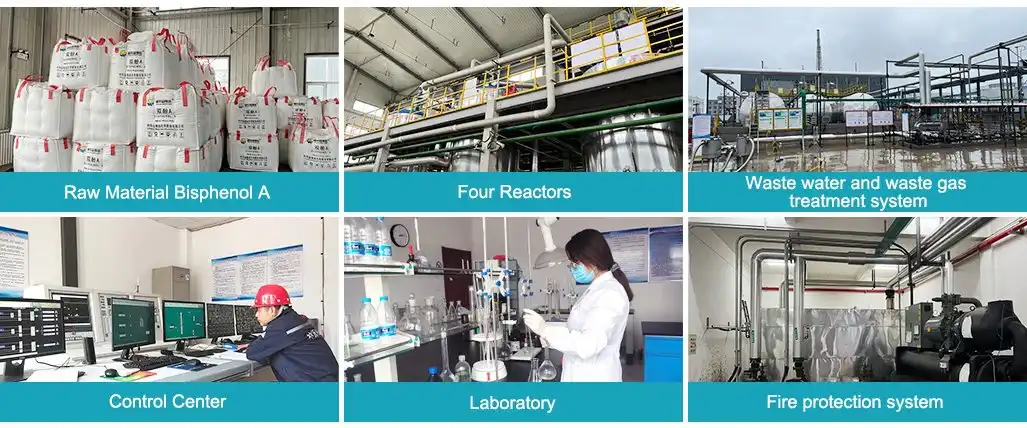
Storage and Shipping
When storing epoxy resin, please keep away from direct sunlight, heat source, ignition point and waterproof. Dangerous goods shall be stored according to regulations. If they are not used up after opening, they shall be sealed for storage. The shelf life of epoxy resin is generally 1 years, and it can still be used after passing the retest. Under relative conditions, such as storage at freezing temperature, some epoxy resins may crystallize, which is only a physical change and does not change their chemical properties. In case of crystallization, the resin can be heated to 70-80 ° C and restored to its original state by stirring.

Usage
Epoxy resin is rarely used alone. Generally, auxiliary materials such as curing agent filler are used. Tertiary amine compounds are used as curing agents, which are usually 5 to 15% of the resin amount. Acid anhydride is used as curing agent, which is 0.1 to 3% of the resin amount. Polybasic adhesive is used as curing benefit. Epoxy resin is cut to 1:1 mol cal. 703 is used as curing agent, which can be used according to 1.0.4 (weight ratio)
Send Inquiry

